Eurail Passes are famous as a way to save money while exploring Europe, but they are also confusing and often misunderstood. They are still an amazing money-saving tool for certain types of travelers, and not a wise idea for most others. Before Europe introduced dynamic rail pricing (like airfares, where the price varies depending on when you buy it), a Eurail Pass was an easy way to save money since all tickets had fixed prices that were generally fairly expensive. These days most travelers can save far more money just by buying their train tickets at least a few weeks in advance.
That said, Eurail Passes are still great for longer trips and especially for people who like to make plans as they go. Dynamic rail pricing made advanced tickets much cheaper, but it also made last-minute tickets MUCH more expensive. Below we will discuss Eurail Passes and whether they are a good idea for your trip or not.
Disclosure: This is a reader-supported website and some of the links are affiliate links where a small commission is paid to help keep this site going.
Note: This article was written in 2012 and has been continuously updated since then, so all information is current as of April, 2024.
Eurail 2024 changes: New countries and a mobile version
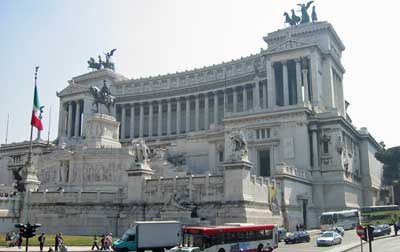
Aside from that it’s just the normal fact that they have updated the timetables as of December 2023 and have a few promotions going on, but those usually don’t happen over the busy summer season.
Eurail passes are now available in a mobile version
Until very recently, Eurail Passes were only available in paper form and they were quite confusing at first. You’d get a pass with a series of empty boxes on it and you’d need to enter your trip before you’d use your pass each day and then have the first conductor verify it. If you lost your ticket (and this was not uncommon), it was a whole ordeal to attempt to get a replacement.
Again in 2024 Eurail offers a fully mobile version that is delivered instantly to your mobile device with no delivery fee. And if you somehow lose your phone, you can resume using your Pass on your replacement with no extra headache. This is MUCH more convenient in every way and as long as you can keep track of your phone you’ll always have your train pass handy.
If your trip will be 2 weeks or less, a Eurail Pass probably won't be worth it
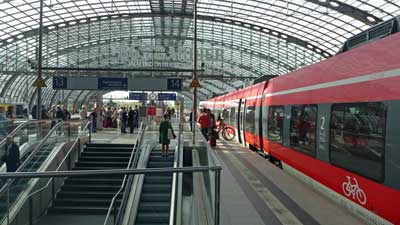
Eurail Passes are ideal for travelers on longer trips, and especially those who don’t want to plan all of their destinations and dates far in advance. If you have your itinerary pretty much planned out and you don’t require much flexibility, you’ll be far better off just locking in your dates and buying your train tickets as early as you can. Again, they can be surprisingly cheap if you buy 2 to 4 months out.
If you are age 27 or younger, a Eurail Pass is probably worth it

With this in mind, if you are lucky enough to still be 27 or younger, you should seriously think about getting a Eurail Global Pass Youth, partly because the sense of freedom instantly gets more expensive at age 28. The age cutoff was 25 until recently, so this change is a great deal for anyone who will be 26 or 27 at the start of their trip.
You aren’t guaranteed to save money by buying a Youth Eurail Pass, but chances are good that you WILL save money and you’ll definitely save a lot of hassle as well. Especially now that Eurail Passes come in a mobile form, it’s even that much more convenient to just hop aboard any train that is about to leave the station and not worry about buying or even having a ticket. Especially for young people, it can be really fun and exhilarating to literally just walk into a train station with your backpack and look at the departure board and then decide where to go at that moment.
If you are age 60 or over, a Eurail Pass could also be great value
Another fairly recent change is that anyone who is 60 years or older at the start of the use of a Eurail Pass now gets 10% off the normal adult fare. That new discount is going to make this a great value for many travelers who might have been on the fence about buying a full-price pass before.
>>>Check prices on Eurail Passes
If you are planning on traveling in 1st Class anyway, a Eurail Pass is probably worth it
Most 2nd Class trains provide similar comfort and legroom to Business Class airline seats, or at least close enough, so for most people it’s not worth the added expense for 1st Class. However, if you are rich or elderly or fear contact with strangers, a 1st Class Eurail Pass is probably worth it no matter what.
Not only do you get much more comfort and legroom in 1st Class, with only 3 seats across instead of 4, but there is another advantage to 1st Class on European trains. Since it’s mostly business travelers and wealthy people traveling in 1st Class, the carriages are almost always mostly empty except in the mornings and late afternoons between large cities. In 2nd Class the only available seats might be two seats in an 8-seat cabin with all the other seats taken up by a loud family or a group of rowdy friends. In 1st Class you are all but guaranteed a peaceful ride, and usually plenty of empty seats from which to choose.
A hidden Eurail Pass benefit: Making extra stops on travel days for free
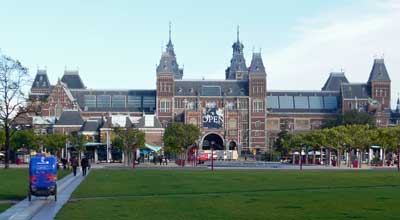
Brussels in particular is one I recommend a short stop in because the small historic center around what they called the Grand Place is amazing and gorgeous, while the rest of the city is rather boring by European standards. With a Eurail Pass you can jump off the train in Brussels and explore the city center for a few hours (luggage storage is cheap and easy) and maybe have lunch, and then hop on a later train to complete your journey to Amsterdam. There are opportunities like this on many if not most trips between larger cities, and if you buy the point-to-point tickets you have to stay on the train you booked.
Another example is the high-speed train between Barcelona and Madrid, which takes about 2.5 to 3 hours in each direction. There are some interesting cities in between, but in this case you could take a morning train from Barcelona to Madrid and then check into your accommodation, and then hop on another train from Madrid to Toledo, which takes about 30 minutes and costs €14 each way. Toledo is a historic and fascinating town, but it’s also pretty small and you can explore the main sights in an afternoon. With a Flexi Eurail Pass where you buy a certain number of travel days, you can save more money by adding on these sorts of nearby stops on travel days.
If you'll be touring major cities within ONE country, a single-country pass might be perfect, and Second Class passes are available for all ages
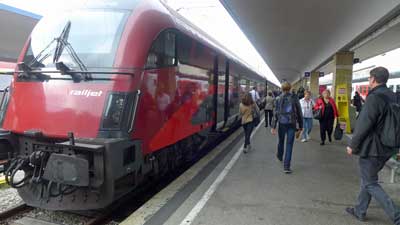
Single-country passes are still available and they MIGHT be good value for you, but it depends on which country and how much traveling you’ll be doing. If you plan on going all over a larger country such as Germany, France, or Spain, and especially if you like to make plans as you go, a Single-country pass for one of those might be your best deal. On the other hand, smaller countries (such as the Netherlands) or countries where train tickets are already fairly cheap (such as Italy) might be harder to get value out of. Long story short, for single-country passes you really need to check fares of the places you plan on going and see how they add up compared to the pass.
>>>Check prices for Single Country Passes
Eurostar (between London and Paris or Brussels or Amsterdam) tickets are now included for Eurail Pass holders for a €30 reservation fee
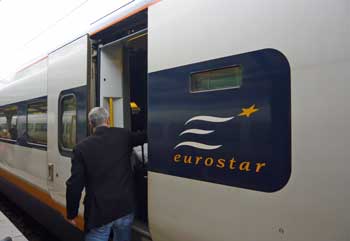
Our recent tests show that Eurostar fares one-way from London to Paris can be as low as €49 if you book about 3 months out, or as expensive as €214 for the same seat if you wait until the day of travel to buy. Round-trip/return tickets can be even cheaper if there is a promotion running.
>>>Check Eurostar prices
If you are on a really low budget, a Eurail Pass isn't a good idea
Here’s the thing. As we’ll discuss below, there are many potential benefits to Eurail Passes, and they will often save you money, but they do cost a lot and they only really save you money when traveling in the more expensive countries.
So let’s say you have a flight to Rome and then US$2,000 to last you a month after you arrive. Buying a Eurail Pass before you go would help you see a lot in that month, but you’d practically need to sleep in parks for your funds to last the whole time. You’d be better off moving slowly in the southern countries, or just in Italy itself, as a way to have the best holiday on your budget. You might also be tempted to use a Eurail Pass mostly on night trains so you can save the cost of a hotel or hostel, but those aren’t ideal for most of us.
The cheapest way to get around Europe by rail is to buy all train tickets online at least a couple months in advance. The fares are low, but they are non-refundable and non-changeable. See how far in advance you should buy train tickets to get those attractive fares.
If more than a little of your travel will be in eastern Europe, a Eurail Pass isn't a good idea
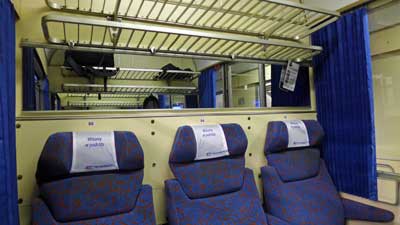
The good news is that the trains operating in this region, and the buses that operate alongside and/or where trains aren’t running, are quite cheap. So if any significant part of your trip will be into this region, a rail pass doesn’t make sense.
Basic types of Eurail Passes
Long gone are the days of the simple options, replaced by specialized passes that are meant to appeal to different styles. It should be pretty easy to figure out which is best for you, and then keep going down the page to decide if it’s worth it at all.
Eurail Global Pass – 4,5, or 7 days within 1 month or 10 days within 2 months
Until recently the minimum number of travel days with 10 days within 2 months, but now you can buy as few as 4 days within 1 month for about €200 to €250 (for first class). This can actually be an interesting strategy if you are planning many shorter and cheaper trips (like within Italy or Eastern Europe), and also 4 or 5 longer trips such as Berlin to Amsterdam. This way you can buy only 4 or 5 travel days and only use them for your most expensive travel days, and just pay as you go or buy cheap advance tickets for your other journeys.
Eurail Global Pass – 15 to 90 consecutive days
This variation allows for unlimited travel on the system for between 15 and 90 total days. They are really only a good idea for people who are certain they are going to travel very often, with much of it being in the north of Europe. The problem with them is that if you really try to get your money’s worth, you will probably ruin your trip by spending too much time on trains in general. On the other hand, if you will be in Europe for 2 or 3 months and plan on traveling around a lot, you can get a LOT of use out of a longer pass. The 3-month pass is around €900 so it’s literally about €10 per day. Imagine going back and forth between Berlin and Munich or Barcelona and Madrid for €10 per day!
One Country Pass
Obviously these are for travel within one country only. Again, they can be great deals if you plan on extensively moving around one particular country.
Where to buy your Eurail Pass
Eurail Passes are cheapest and easiest to buy online, primarily from two main sources which offer all the same products at the exact same prices:
This is a reliable company based in the Netherlands but with fulfillment offices in the US and Ireland. Price of Travel is a partner with this company, and if you use the links of this site we earn a small commission to help keep this site online. Eurail.com is usually cheaper than RailEurope (discussed below) by the way.
They were founded in the 1930s and are based in New York, but owned primarily by the French and Swiss rail companies. They offer free shipping (2 to 3 business days) on all orders of US$399 or more, although now that a mobile version is available, this is meaningless. Price of Travel is a partner with this company, and if you use the links of this site we earn a small commission to help keep this site online.
Reservations on European trains for rail pass holders
For most of the fastest trains between major cities you’ll need to reserve a seat even with a rail pass. It can usually be done just before you leave and the cost is usually around €5. Here’s a full list of which European trains require reservations and which don’t.
Reservations are required on all intercity (longer distance) trains in or involving France, Spain, Switzerland, and Italy. For most trains in Germany, Austria, Netherlands, Belgium, and most of eastern Europe, you can usually find trains that don’t require seat reservations. Often, if you don’t leave until after 9:30am or so, you can ride on any train with no seat reservation, but you have to research each leg to be sure.
How to determine which trains require seat reservations, and also get schedules
You can click on the link just above this section for a list of countries and their seat-reservation policies, but in some cases it’s actually a bit more complicated than that. For example, you can generally ride without a seat reservation on fast ICE (Inter City Express) trains in Germany if you depart after 09:30 in the morning. They do this to free up seats for business travelers who pay full fare, and they don’t mind filling up seats with rail pass holders on trains leaving a bit later.
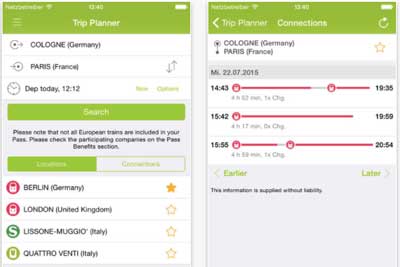
Night trains in Europe are making a comeback
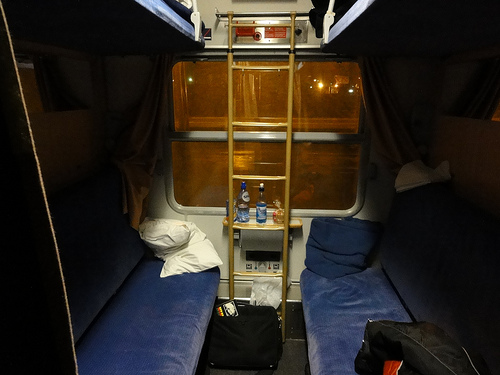
Fast forward to 2024 and night trains are not only expanding service, but they are very trendy. Some of it is nostalgia for the older way of getting around, but most of it is for environmental purposes combined with European hatred for the “low cost airline” experience with RyanAir and Easy Jet etc.
Personally I’m still not a fan of night trains because I find it difficult to sleep on them since they often get decoupled at interim stations in the middle of the night and then coupled onto other trains coming from other places, and I can’t sleep through any of that. But still, they are worth looking into and they are fun to try at least once.
A bit of warning that they tend not to be cheap and even if you have a Eurail Pass you’ll almost certainly want to book a sleeping cabin with a bunk or couchette, and that will come at an extra fee. On the other hand, if you are the sort of person who can sleep sitting upright in a normal seat, then that won’t cost any extra on most overnight trains.
Factors to consider when thinking about any Eurail Pass
Assuming you know which Eurail Saver Pass option is the best one for your type of trip by now, we’ll go over the main factors that should help you decide whether it’s the best idea for you.
Eurail Passes are best for standard ‘medium length’ journeys
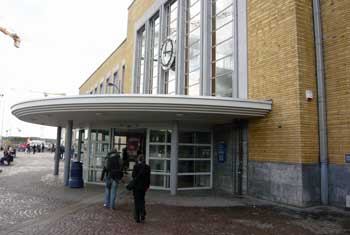
However, if you are determined to travel between Rome and Paris, it’s about a 14-hour journey that will almost certainly be overnight. In this case, a cheap plane ticket is probably better, although taking shorter hops on the train is even better, so spend a day or two in Milan or Lyon on the way instead.
And of course, if you prefer to stop in various small towns between the big ones, then a Eurail Pass won’t pay off, except for the traditional kind for unlimited travel in a given period.
Eurail Passes are better value in northern Europe, France, and Spain, and poor value in Italy
Once you do a bit of research you’ll quickly learn that train tickets (and almost everything else) are much more expensive in Germany, Netherlands, Denmark, Sweden, Norway, and Finland than they are in Greece, Italy, Portugal, and Spain. With this in mind, the regional passes can make sense if you are spending time in the south, but the Global Passes almost certainly won’t. Train tickets in Spain used to be fairly cheap, but in recent years they’ve added new high-speed trains between the major cities, and these are quite expensive.
Unlike most other countries, Italy really subsidizes its train tickets so they are quite reasonable even on travel day, and very cheap if you buy a month or more in advance. For example, you can go between Rome and Florence for around €49 if you buy on travel day, and as little as €19 if you buy well in advance. In most other countries, fares are double or triple that much for similar rides.
So consider your planned itinerary. If more than half of it is in the Mediterranean countries then look into a Regional Pass or just buy tickets as you go, because they tend to be pretty cheap. But if you are planning on spending at least half your time in Paris and places to the north of it, then a Eurail Pass is probably a money saver because those tickets are expensive.
Trains are almost always better than planes
Flying sucks, even in Europe
Until you’ve experienced the joy of traveling around Europe by train you might be tempted to “maximize” your time by flying low-cost airlines between each city. This would be a mistake. In order to get truly cheap airfares you have to purchase long in advance, buying non-refundable tickets. You might also have to commit to flights in the very early morning or in the late evening, because cheap tickets on convenient flights sell out quickly.
And again, most European airports are around an hour outside of the city. They are often on the main train lines, which helps, but still you have to deal with the madness of security and also try to get there at least two hours early. From one city center to any other city center it’s about 5 hours minimum, even if they are close, and those are pretty miserable hours.
Train travel is a positive experience

Not only are all the seats comfortable on trains, but you also have an interesting view most of the time. Better still, trains deposit you in the heart of every city, which is usually the neighborhood with the cheapest hotels and food. It’s a wonderful feeling to step off a relaxing train ride, buy a hot dog or sandwich at a local shop, and then be in your hotel room only about 10 minutes later.
Eurail Passes are better than train tickets alone
As someone who enjoys the process of crunching numbers and looking for value, I have to also mention that I’d buy a Eurail Pass even if it seemed like it would cost a bit more than the individual tickets. With a pass you get an extra element of freedom that is worth a lot more than you might expect until you’ve used one.
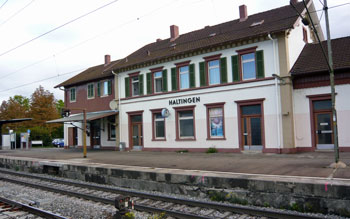
Let’s say you are heading from Amsterdam to Hamburg tomorrow morning. The 09:00 train you planned for might seem a bit ambitious after a long night out, so you can instead opt for the 10:00 or 11:00 train. As long as you walk into Centraal Station 10 or so minutes before departure, you are on. If you are flying you can’t change your ticket, and if you are buying train tickets as you go you have to be in line at the international desk at the train station at least 30 minutes early, and even then you might miss it if they are busy.
Freedom and getting to feel like a big shot
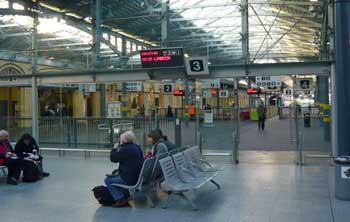
Let’s say you are staying at a hostel in Brussels, and two groups of new friends suggest that you go along with them to their next stops. One group is going to Bruges, which is a short and cheap journey, so you can join them by buying individual tickets (unless you have the unlimited pass, making it free). Then you restart your trip from Bruges, on to your next destination. The other group is headed to Berlin on a night train, which is long and expensive, but with a Eurail Pass you don’t even have to think about the cost. On you go, just like a rich person.
Buying a Eurail Pass is great for those who might run out of money
We all know people who keep meticulous track of every penny they spend, and who are always putting money away for a rainy day. And we all know people who can take a US$100 “entertainment fund” and burn through almost all of it in just a few hours. For the first type of person, a Eurail Pass can help you keep track of expenses, but it’s really the second type of person these are best for.
It’s sad to hear about people who have big plans to see their dream destinations, but they run out of money for transportation halfway into the trip, so they have to just stay put until they fly home. It happens. Locking in your major transportation costs before you leave home, and probably saving money in the process, is a wise move for anyone who isn’t as disciplined as they’d like with their money.
>>>Check prices on Eurail Passes
Bottom line: If you want to keep travel costs down, your choices will usually be a Eurail Pass or buying tickets at least a month or more early
In the last few years, almost every long-distance train ride in Europe has switched to a pricing system similar to low-cost airlines. In other words, tickets go on sale 2 to 6 months ahead of time at very low prices, and they keep getting more expensive as the train fills up and the date approaches. For most trips where a rail pass is possible, this is how things stack up:
Cheapest possible way: Buy advanced (non-refundable, non-changeable) train tickets at least 30 days in advance
Next cheapest way: Buy a Eurail Pass and make seat reservations as you go, usually only a day or less in advance.
Most expensive way: Buy train tickets as you go, or less than a week in advance.
Thinking about it this way should make the choice a bit easier. If you are the type who likes to plan each day and travel segment long before you even leave home, then buy tickets online for the best prices. This can be the best strategy for most shorter trips (10 days or less) because you simply don’t have enough time to change many things as you go anyway.
Buying a Eurail Pass won’t be quite as cheap, but you are buying a LOT of flexibility with the extra money. If you dream of making up your plans as you go, or even making up your plans just a few days in advance, this is almost always your best bet.
But if you wait too long, and just show up looking to buy train tickets as you go, they are going to cost a fortune. As recently as only a few years ago all seats would be the same price on many rail systems, so you could always just wing it. When each country computerized its rail systems so they can sell advanced tickets cheaper, they also had to keep track of seat reservations, so the whole pricing structure had changed to favor advanced ticket buyers and rail pass holders over those who’d prefer to just hop on any train as it is leaving the station.
Have a rail pass or itinerary question of your own?
It wasn’t planned but scores of people began asking me rail pass and itinerary questions at the bottom of this article and a few others. I’m happy to keep answering them and now I’m trying to organize them better as well so they are easier for other people to find.
If you have a question about specific types of European rail passes, please ask it in the comments below.
But if you have a question more about a European itinerary or other non-rail-pass questions, please click over to the European itineraries Q & A article and ask in the comments of that one.

Hi! My friend and I are planning a trip and are getting confused with what we should do for transportation. We found your site much more helpful than the main eurail sites. We were wondering what you thought we should do based on of our rough outline of our trip. We were looking at the Eurail Global Pass but aren’t sure if it would be worth it?
Rome (5)
Florence (4)
Venice (3)
Munich (3)
Berlin (5)
Amsterdam (4)
Brussels (2)
Paris (5)
London (5)
I understand the Global Pass would get us to each city except for Paris-London and through the rails of London. Based on our distances, it seems like we’d have to pay lots of extra fees to travel so I’m not sure if the pass would even be that beneficial. Also, does this pass include railways through the city, say Italy, on their public transportation line?
Thank you!!
Meagan,
Yours is an example of an itinerary where a rail pass gives you more flexibility, but probably won’t be the cheapest way to go. In other words, if you book all your train tickets at least a few weeks in advance (online, through the official rail site of one of the countries involved), then you’ll lock in the cheapest trip. But many people prefer to have the freedom to change plans and stay longer in some places and shorter in others and such, and in that case the train trips would be very expensive.
Also, your cheapest worthwhile rail pass for this trip would be a Select Pass for 4 countries (Italy, Austria, Germany, and Benelux) rather than a Global Pass, and then buy that Brussels to Paris ticket on its own as early as possible, as well as the Paris to London trip on the Eurostar. As of April, 2014, you could buy a Select Pass that also includes France, but they are eliminating the 3-country and 5-country versions, and France would be your 5th country. That one trip from Brussels to Paris won’t be too expensive in advance anyway.
If you do get the rail pass you’ll need to pay about €5 each for seat reservations along the way, but you’ll have no trouble getting those the day before or even on the day of travel, so it really is flexible. With a Select Pass you can choose from 5 to 10 travel days out of 2 months, and the more you buy the cheaper each one is.
However, the rail pass does NOT include public transportation in most places, although it does cover suburban rail networks if you take them on the same day you use as a “travel day.” The good news about this is that you can get an unlimited public transport pass in each of these cities for around €6 per day. Several of the cities on your list are best explored on foot anyway.
If you are both 25 years or younger, that rail pass might be worthwhile. Let me know if you have any other questions. -Roger
Hi Roger,
This is a great site and thanks for all the useful information!
I’m a single lady over 35 and planning to make my first trip to Europe. I know this is very last minute but I hope to travel in late Mar / early April for a period of 21 to 30 days (flexible).
I agree with your suggestions about not cramming too much in one go so I’m thinking to visit Paris, Amsterdam, Italy and if time permits, Greece.
I’m clueless as to how I should plan the Europe trip and stumbled upon your site. I have a few questions which I hope you could kindly help advise:-
– Is it too late to plan for a trip to Europe for April now ? (I read about needing to purchase some of the rail passes in advance to secure better rates)
– Would it be alright for a single lady to travel alone in Europe or would you suggest a package tour instead in this instance?
– Based on what I’ve read about your advices, seems like I wouldn’t require rail passes ? Can i buy the train tickets on the spot or do I need to buy in advance ?
– Do you have any suggestions/advice on the itinerary for a first time visit to Europe ?
Thanks very much for your help! 🙂
Jo,
I appreciate the kind words and that this site has helped you plan.
It’s not too late to plan a Europe trip for April now. There are a few expenses that could have been lower if you started planning earlier, but not by as much as you might fear. One thing to consider is that airfares and hotel prices tend to go up in general as summer approaches and goes on, so you are already going at a fairly cheap time of year. Still, buy your plane ticket as soon as possible because it will probably get a bit more expensive the longer you wait.
Even as an American male I can assure you that you’ll be fine as a single lady traveling alone in Europe. There are parts of the world where I wouldn’t be so sure, but most of Europe is at least as safe as the US or Canada or anywhere else. The only thing you might deal with is a bit of extra unwanted attention in Italy, but it’s extremely rare that women actually feel threatened. If you are still unsure about it I’d recommend searching for articles online about ‘solo woman travel in Europe.’ There are hundreds of great bloggers and writers out there who describe what it’s like to travel alone, with plenty of great tips on how to use that as a way of meeting people while staying safe.
Right, if you stick to your plan of visiting only Amsterdam, Paris, and Italy, then a rail pass probably wouldn’t be good value, but if you add more than a couple of extra stops, a rail pass could be ideal. Train fares in Europe are becoming more like airfares in that they tend to be quite cheap if you buy really early, and the price keeps going up as the date approaches. You can still get good fares only a week or two out in most cases, although you might have to go on the train that leaves at 11am instead of the one at 9am (because morning trains sell out first).
One factor to consider is that the trains from Amsterdam to Paris and from Paris down into Italy would be very expensive if you bought them with little or no notice. Fares within Italy aren’t so bad, but still cheaper if you buy early. If you bought a rail pass, you could lock in a reasonable price for all of those journeys, and still make your travel decisions with little or no notice. You’d need to pay (about €5 each) for seat reservations on most trains, but you can usually get those even at the last second. On the other hand, for those of us over the age of 25, we have to get a 1st Class rail pass. First class is wonderful, though even 2nd class is plenty comfortable for most people.
As for an itinerary, I think you are off to a good start. Amsterdam is a pretty stress-free place to begin because everyone speaks fluent English and it’s quite compact. So you could fly into Amsterdam, take a train to Paris (for at least 4 nights), and then your cheapest and most efficient move would be to fly to Rome or anywhere else in Italy. You can get a cheap airfare if you book soon, compared to a train journey that would take a whole day and cost at least double. Once in Italy the classic itinerary is Rome (at least 3 nights), Florence, and Venice.
I’ll be happy to give you more specific advice once you are more certain of exactly where you want to go. -Roger
Hi Roger,
Thanks for the very fast reply and the detailed answers! You are great!
I will try to secure the air tickets from my home country to Paris or Amsterdam (likely the former as the ticket to Amsterdam seem to be pricier) ASAP.
Given about 21 to 30 days travel, I hope to have some flexibility so I’m not sure whether i should book all my accommodation now or to only book for the first few days for when I first fly in. Where would you recommend in France apart from Paris ? I will pencil in Florence and Venice too in Italy as you have kindly suggested (Thanks for that!) Also thinking of heading to Greece so would something like this below makes sense ?
1. Paris (5 nights)
2. Nice ?
3. Amsterdam (3 nights ?)
4. Rome (5 nights)
5. Florence ?
6. Venice ?
7. Greece (5 nights)
8. Paris (Will need to head back here to catch my flight back to my home country)
What do you think of this itinerary ?
Apologies that I might not have understood the part on the Eurail pass clearly. In your opinion do you think I should or shouldn’t get the pass ?
Jo,
Whether a rail pass is good value for you will depend on what your final planned itinerary ends up being. My hunch is that you’ll do better without a rail pass, as long as you are prepared to book most of your train trips at least a couple weeks in advance. If you’d prefer to keep some flexibility so you can change your plans as you go, then a rail pass would keep costs down.
Your new itinerary looks pretty good except for the starting in Paris part. If you want to fly around Europe you can visit each city in any order you please, but if you want to take trains you have to put them in geographical order. In other words, Amsterdam is well north of Paris, and all the other places are to the south. So if you are definitely flying into Paris, you’d have to take a train to Amsterdam, and then another one back to Paris on your way to Nice and then Italy. More than likely, it would be cheaper to pay more for the Amsterdam round-trip than to save a bit by flying into Paris and then spending time and money on a train trip to Amsterdam from there.
If you want to add Greece to this trip, you’d want to fly from Rome to Athens to spend 2 or 3 days there. Then you could take a ferry to one of the Greek Islands for 2 or 3 nights, but of course after that you’d probably have to backtrack to Athens and then fly back to Rome. I’d recommend saving it for another trip because you’d be rushed to see much of Greece in 5 days, and you’d rush the other places just to fit it in.
If you spend 3 or 4 nights in Nice (including day trips to Cannes and Monaco), and 2 or 3 nights in Florence, and 1 night in Venice, then you’ll have a great trip with enough time in each place.
So again, you have to put your itinerary in order of where each city is located so you can go in as close to a straight line as possible. Once you make those decisions, you’ll probably want to buy at least a few tickets in advance, or buy a rail pass if you want to be more flexible. -Roger
Hi
I and my family are planning to visit Switzerland/Italy/Paris between 18th April and 29th April 2014. I have the following questions:
1. Is it correct that effective 1st April, the Special pas will cover 4 countries and include France
2. While looking at the timetable there is a caption which mentions that the trains run on select dates and then mentions dates 10th March to 14th July. Does it mean that it will not run on these days.
3. As the time table is not very clear, it is creating a bit of a confusion and a practical problem for me to plan the trip. Would you be kind enough to suggest the trains available for the following dates/destinations. There are two schedules.
Proposal I
– 19th April- Basel to Rome/Florence with a halt at Pisa
– 21st April – Rome to Milan or Venice
– 23rd April – Milan to Venice or vice versa
– 24th April – Milan/Venice to Basel
– 26th April – Basel to Paris
– 27th April – Paris to Basel
Proposal 2
– 19th April – Basel to Paris
– 20th April – Paris to Basel
– 24th April- Basel to Milan
– 25th April – Milan to Venice
– 26th April – Milan to Rome/Florence with a halt at Pisa
– 29th April – Rome to Basel
Jay,
1. Yes, it’s true that France is rejoining the Select Pass options beginning on April 1. The downside for some is that instead of offering a 3, 4, and 5-country version, it’s only a 4-country version.
2. I’m not sure which timetable you are looking at. Most trains run the exact same schedule every day. If you are referring to holiday service, I’d have to know where you are seeing that in order to help.
3. And unfortunately, I can’t help you pick specific trains. There are literally trains going every hour starting early in the morning and going until late in the evening on all of those routes. For those shorter trips within Italy there are probably 2 per hour. Either route would make a great trip.
Let me know if I can help you make any decisions on this. -Roger
My husband and I are planning a month long trip through Europe. The amount of time in each city is flexible as well as the direction. We will start and end our trip in Naples, Italy. Since we will arrive the Wednesday before Easter and end mid-May, I suggest the following direction.
Travel from Naples to Paris
Paris for 7 days with trips to Normandy, Loire, and Versailles.
Rothenburg 3 nights
Munich 4 nights with trips to country side touring castles.
Venice 3 nights
Florence 3 nights
Rome 5 nights to see the usual tourist sites
Naples 4 nights
I am not sure if a Global Pass is the way to go or purchase individual tickets?
Bonny Jo,
You definitely don’t want a Global Pass for a trip that only includes 4 countries like this, but a 4-country Select Pass could be perfect. Either way, you should probably start out by flying from Naples (or Rome, which you can reach cheaply by train) to Paris. Taking a train all the way there just to start coming back down would take a long time and cost a lot without a pass.
Also, Rothenburg ob der Tauber and Venice are both quite small, and both a very crowded during the day with day-trippers. You’ll be able to appreciate each of them in a visit of only one or two days, especially if you make a point to go out in the mornings and evenings when fewer people are around. So in both cases, I think you’d enjoy the trip even more if you added another stop instead of staying so long. There are plenty of great options not far from either place.
The cheapest way to do this trip by train would be to buy all of your tickets online at least a month or more in advance (from the official websites of the national train companies). The problem with that is that it locks you into an itinerary before you get the rhythm of your trip.
A better alternative would be to buy the 4-Country Select Pass (for Italy, Austria, Germany, and France). Just a couple days ago we found out that France will once again be included in these Select Passes starting in April, 2014. Until then you would have had to buy a Global Pass for a much higher cost. You can buy a Select Pass for a set number of travel days, starting at 5 and going up to 15. So you might want one with about 8 trips, and you can still pay cash for short rides like the day trip to Versailles from Paris.
The advantage to a rail pass is that you can go when you please, even at the last minute. You’ll usually have to make a seat reservation even with a pass, but those cost around €5 each, and you can almost always get them just a few hours before you want to go. I prefer to get seat reservations the day before I want to leave, and that way I can just march into the train station and onto my train when I leave.
So your choice is flexibility vs. possibly saving a bit and locking in all of your trips with non-refundable advanced train tickets online. -Roger
Hi Roger,
So glad I found you! My 20 year old son and 3 mates are planning to go to Europe for 5-6 weeks. The suggested plan is
Fly into Amsterdam
Berlin
Prague
Split
Greek Islands
Spain
London
Amsterdam to fly home from
I am not sure that Global Pass is worth it as some parts are impossible by rail (Split-Greece-Spain) so I think maybe they should just buy tickets as they need. What do you think.
Thanks
Julie,
I agree with you that a Global Pass, or any rail pass for that matter, wouldn’t be good value if this is the whole itinerary. Obviously Split to Greek Islands to Spain would have to be done by air, or really slow ferries. The trains within Spain can be quite expensive though, so that could make a difference.
Actually, most of those journeys could potentially be cheaper (and faster) by plane if you buy the tickets at least a month or more in advance. Trains are more enjoyable for most of us, but to be honest, the scenery on the route we are discussing isn’t too special anyway (circling around the Alps, so it’s almost all flat).
Their best bet will be to buy those train tickets or flights as far in advance as possible, online from the official websites of the various railways. From London to Amsterdam at the end it would be on the Eurostar train, but if they are flying right out of Amsterdam-Schiphol anyway then a flight from London might be a bit easier, and around the same price. -Roger
Hi Roger,
First off, I echo what others are saying and commend you on such a helpful site. Your knowledge and wisdom are obvious and it is impressive how fast you respond to everyone. Thanks in advance for your advice!
My wife and I are 29 years old. We are traveling in Europe from July 7th – October 1st (2014). We are looking forward to preparing a rough itinerary for our trip, but want to have lot of flexibility during the trip. Our in-laws planned the beginning of our trip. We travel with them from Copenhagen to Berlin. They are serious planners and this part of the trip is set in stone. This beginning part has a fair amount of train travel in expensive countries. Our traveling style is typically to get a feel for the people, food and outdoor activities. We are interested in history and museums but we definitely don’t want to get bogged down with that, as we are more interested in gaining some sort of appreciation for everyday life of different cultures. Given our limited amount of time, we are willing to cut out some stops.
We are considering the 3-month continuous Global Pass. As long as the trip comes out somewhat close in expenses compared to buying tickets a-la-carte, I am hoping that the pass will give us peace of mind that we aren’t going to pay outrageous sudden fees to go somewhere and then decide we don’t want to go. With the pass we will just have reservation fees.
My concerns are that if we buy tickets on the day of departure that the fees will be crazy. Even with the eurorail pass we will try and figure out our next move ASAP to avoid things getting sold out. My other concern is that there are some places like France where they have a limited amount of seats for pass holders. I don’t want to have a global pass and then have to pay full fare for lots of trips. For this reason as well as avoiding crowds we want to travel in France/Spain towards shoulder-season (During September).
Starting July 7th
—–Set in stone
Copenhagen – 4 nights
Stockholm – 3 nights
Oslo – 3 nights
Flam – 1 night (Norway in a nutshell tour)
Bergen – 2 nights
Berlin – 3 nights
Starting July 23rd
—–Flexible
This is a very rough route. We are still in early stages of planning and would appreciate some guidance. It’s hard to figure out a good order of places to stop in as we ultimately work our way to France/Spain. On the way to bigger cities we don’t mind getting lost in a couple of smaller towns too : ) Below are just some of the places we are interested in (Cities and Countries jumbled together). Some of the countries we still need to figure out which cities interest us.
Munich
Zurich
Berne
Interlaken
Lucerne
Innsbruck
Salzburg
Prague
Krakow
Budapest
Croatia
Greece
Italy
Bruges
Brussels
Amsterdam
Normandy
Paris
Nice
Cannes
Toulouse
Barcelona
Madrid
Fly to Japan October 1st from Spain or France (depending on best place to end up on our route)
Looking forward to your response!
Gary,
The kind words are appreciated. Helping people with things like this is actually one of the most interesting parts of running a travel website, so it works out well.
In your case I do think the 3-month continuous Global Pass is the way to go. With 2 traveling together in 1st Class it works out to US$1904 each, which is about US$21 per day. If you travel every third day on average then it’s US$63 per trip, plus seat reservation where needed so let’s call it US$70 per trip. Now, if you bought 2nd Class tickets at least a couple weeks in advance for the entire route you have in mind, you could probably do it for a bit less, but compared to 1st Class where you can pretty much go anywhere at any time, the pass is a huge bargain.
You’ve a right to be concerned about high train fares if you buy on the day. For example, a train from Paris to Nice leaving tomorrow morning would cost €99.90 (US$138) or more, and that’s in 2nd Class. Many popular routes cost that much or even more if you buy with short notice, just like buying plane tickets at the airport. Most locals buy way in advance, so those last-minute fares are basically for business people. The seat reservation on that one would be €9 in either class, but it is a high-speed TGV so it’s worth it.
Again, it’s all about how much freedom to decide things at the last minute is worth to you. The great thing about the 3-month version is that the daily cost ends up being so low that it’s a pretty easy decision to make, AND you get to go 1st Class, which is really wonderful on such a long trip.
As for the restrictions on rail-pass seats on French trains, it’s only on the popular express routes on high-speed trains (including Paris to Nice), so many of your journeys will likely be on unlimited trains anyway. Also, my understanding is that sell-outs well in advance are very rare, and primarily in 2nd Class and on popular commuter trains (Monday mornings and Friday evenings etc) or holidays. In 1st Class you are less likely to encounter a limit, and even if you do, there is a train once per hour all day on these routes, so you’ll usually just have to go a bit later than you first planned. Still, if I were in your shoes, I wouldn’t want to take many chances after paying so much for a pass, so I’d make those reservations at least a few days in advance whenever possible. Unless you wanted to go on a holiday, you’ll probably get seats with no problem, and since your schedule is flexible, the worst case scenario is probably just staying one more night in the city you are in.
Those continuous passes are also great in that they allow you to take day trips without worry. A 90-minute each way round-trip could be €60 if you buy it on the day, but only €10 for 2 seat reservations with a pass, and often free on suburban trains that don’t require reservations.
Except for Greece and southern Croatia, you’ll be in train territory the whole time, and mostly in the expensive train areas. I think your list of cities looks really solid, and I’m sure it’ll turn into the trip of a lifetime. I’ll be happy to help more if you have other questions or if I missed something. -Roger
Hey, thanks for the great forum here for advice! So basically im getting ready to plan my trip to europe and i was wondering what you think would be best!
I am from Canada and I have backpacked Europe once before It was meticulously planned. I was traveling with two other people who had no preference on where to visit. Once we landed in England from Canada our trip was layed out like this. I Pre-booked months in advance, 5 flights on the cheaper airlines. England – Dublin. Dublin – Eindhoven. Eindhoven – Barcelona. Barcelona – Budapest. Budapest – England.
I also pre-booked at the same time all of the hostels that we would be staying at during each location. This way it was very organized and all was taken care of in advance. It ended up being a great trip! The problem however was that everything was set in stone and we had no chance to make any spur of the moment stops along the way. This time however the three of us want to have a more relaxed trip and not have to rush to airports or feel like we can’t spend more time in a given country. A Euro-rail pass seems like a good idea.
This time we are hoping to travel to France, Germany, Belgium, and Italy. We are planning on spending 3-5 weeks, and want the freedom to be more relaxed on where and when we go while abroad. Which pass do you feel would be best for us? we are under 25, and are very budget conscious.
Also A big question and fear I have about planning a trip this way is worrying about accomodations. We only plan on staying in hostels, but since this trip will be more of a relaxed spotaneous journey, will it be possible to book hostels on the fly as we go? If not, how would a trip like this be possible? My big fear is not having a place to stay while in a foreign country! Any tips, suggestions, advice would be GREATTTLLY appreciated.
– Thanks!
Harmon,
I totally understand your situation. When I first started traveling a lot, I booked everything in advance, and I still do in many situations, but I also am now comfortable just winging it.
Just to re-summarize a point I’ve made before for many other people in this thread, the absolutely cheapest way to take trains around Europe is to lock in all of your journeys at least a few weeks, if not longer, in advance. And if you want to drift around with little advanced planning, those same trains can cost a fortune. So a Eurail Pass is a perfect solution in a case like yours because it locks in reasonable prices, and still allows you to move around with no more than a few hours advance planning.
Your timing on this question is perfect, and I think you are really in luck here. Just a few hours ago I got an email from RailEurope, announcing that as of April 1, 2014, France is back in the full system for 4-country Select Passes. The bad news (for other people, not you), is that they are discontinuing the 3-country and 5-country versions on the same day, but since you are planning on those 4 countries anyway, you are set. (Actually, Belgium is included as part of Benelux, so you get the Netherlands and Luxembourg for free.)
In case you aren’t familiar with the Select Pass, it allows you to pick a number of “travel days” between 5 and 15 over a 2-month period in 4 countries of your choosing, as long as they border each other. For example, if you pick 10 Days in 2 months, it will cost a bit over US$500 for each of you, so that’s obviously US$50 per travel day (plus about US$7 for seat reservations on many of those trains). There are some journeys within Italy that would be cheaper than that individually, but longer ones would be more, and almost any trip in those other countries could be MUCH more, especially at the last minute. You might consider buying a pass for fewer travel days than you are planning, and that allows you to pay cash for some shorter or cheaper ones, or you might discover that a flight is actually a better option at that point in your journey.
So you’ll have to wait until April to buy a Select Pass that includes France, and when you do I would appreciate if you could buy it through my link to RailEurope. You’ll get the same price, and I get a small commission, which is how I can afford to keep the site running.
By the way, if not for this France announcement today, your best choice would be a Global Pass, and those cost quite a bit more than the 4-country Select Passes. France being back in this system is great news for many of us.
As for booking accommodation on arrival day, it depends a bit on when you are doing this. In June through August it can be a bit tricky, while during the rest of the year it’s quite easy. The only situations where you really have to be careful are during special events, such as King’s Day (formerly Queen’s Day) in Amsterdam, or during the bull thing in Pamplona, and that sort of thing. I avoid those giant crowds anyway, and recommend other people also do unless it’s been a lifelong dream or something.
The good news for you is that the number of hostels in Europe has continued to grow rapidly, often as under-performing budget hotels are converted at least partially into hostels to fill up more often. So let’s say you are heading to Paris tomorrow, and it’s high season in July. Now, Paris has about 30 hostels with dorm beds, and probably 30 more with private rooms in the same price range. In July you can pretty much guarantee that the best 10 Paris hostels (based on location, services, staff, and price) will be full. But that still leaves 20 hostels that still have beds available on the day, many of which will be full by 8pm or so.
So unless you totally space out and don’t book anything until you are drunk late into the evening, the worst case scenario will be that you spend that night in a mediocre place, and you can probably move to a better one the following morning if you choose to. What I prefer to do, whether it’s for a hostel or a hotel, is to do at least a little research a few days before I think I’ll be there, and then book at least my first night once I’ve locked in my plans to go. Realistically, you’ll probably know that you are going to the next city at least a day or two in advance. Once you make that decision, head over to the train station to make a seat reservation if needed, and book your hostel.
Perhaps the best feature of hostels in this situation is that you only have to pay about 10% in advance. So if you book a Paris hostel that is €25 per bed, you only have to pay €2.50 to reserve and the balance when you arrive. Needless to say, if you happen to change plans, the €2.50 is a tiny price to pay, and you’ll probably not change plans with so little notice anyway.
On the other hand, the best hostels in Europe tend to be far better than the lousy ones, and you’ll almost always have a better overall stay if you are booked into a well located hostel with a helpful staff. Many of the bottom half of hostels have remote locations and getting advice and help for sightseeing is often impossible. So you’ll thank yourself for the times when you can lock in a great hostel, such as those in the St. Christopher’s chain. For the record, I have recommended hostels on most city pages on this site, where I’ve hand-picked the cheapest hostel that has a great location and good services. So that should help you start your search, and many of those will still be available a couple days before you arrive.
Hopefully this helps, and let me know if you have more questions. I’m sure you’ll have an easy time of it all once you are on your way. -Roger
Dear Roger,
I’ll be travelling from Singapore to Stockholm in late November and spending 23 days in Europe. My planned itinerary is Stockholm-Iceland-Manchester-London-Paris-Singapore. Plane from Stockholm to Iceland and to Manchester. Then train from Man-London-Paris. Sounds good?
Just wanted to ask you:
1. Is Dec an optimal period to catch the Northern Lights
2. Is Iceland or Sweden a better place to catch it
3. Have you, by any chance know how to travel up North to catch the Northern Lights instead of following a tour (and paying though your nose)
Any help/advice will be greatly appreciated! 🙂
Lexi,
I’m no expert on the Northern Lights, so I won’t be of much help. I do know that winter months are best, and that Sweden and Iceland are both popular as Northern Lights destinations, but beyond that I’d have to research it myself.
Having been to both countries, however, I will mention that Iceland is much more interesting as a tourist destination, although in December there is obviously very little sunlight so the amazing scenery might be wasted.
I’ve heard mostly of people going on their own to see the lights, although the tours are probably really nice for those who can afford it. One problem I’ve heard about is that you can never be sure when they’ll appear, so it’s easily possible to miss them. I’ve also heard of hotels in Iceland that will call guests in the middle of the night if the lights start up, so I really don’t think a tour is necessary. Best of luck. -Roger
Hi Roger,
This website is just awesome! I just spent the last 5 hours mapping my route (with a friend) to Europe and we were debating about the Eurail Global Pass and whether or not it’d be a good idea.
We are arriving in Zurich and travelling to Luxemburg for a day. Then moving to Brussels for 2 days. From then we want to hit France (cities such as Paris, Versaille and Toulose) for approx 3-4 days.
After France we want to hit Barcelona for 2 days and go back to France (Marseille, Nice, Lyon) for approx 6 days. Lastly we would do Geneva (approx.4 days) and back to Zurich to fly back home to Toronto. (trip time approx. 20 days)
My question to you is, is this too ambitious? We have been reading a student travel guide and we allocated their suggested times, but it seems a bit too busy. Also, we were thinking of buying the Global Pass 21 days consecutive for $790 Canadian. Do you think that’s a good option? (We are both 24! yay)
I should mention that we are both very open to any suggestions (even to change countries).
We are planning on staying in hostels to try and minimize the costs…any other suggestions are definitely welcomed!
Thanks for all the help you give to unexperienced travellers like myself
Mariel M.,
Always appreciated when people say those nice things, and I enjoy helping people with this after doing it and studying it for so long.
Yes, I do think you are trying to plan too many stops on a 3-week trip. Even though these European cities are generally much closer to each other than they are in Canada, most of your stops are at least 3 hours apart by train. From the time you leave your hotel or hostel until the time you check into one in a new city, it’s around 5 hours later and most of the sightseeing day is over. So at best, you can consider a travel day to be half a sightseeing day, and if you do that every other day for three weeks, it adds up to quite a bit of travel time.
In 20 days I think 7 or 8 different cities is the most you could visit and also enjoy. Here are some comments on the cities on your list…
Zurich and Geneva are both big, clean, and incredibly expensive cities. They are also a bit generic (compared to Europe’s great cities) so most travelers enjoy the country by visiting the Alps and other natural charms, based in Interlaken or Lucerne, just to name a couple.
Luxembourg is a really nice city with great views, and one day is perfect there.
Brussels is kind of a mixed bag because it has a really interesting city center and an extremely impressive main town square, but other than that it’s marginal because most of it is designed for diplomats and business travelers. I usually recommend that people stop in Brussels for a few hours and then get back on the train to Bruges, which is a great 2-day stop.
Versailles is in a suburb of Paris, so it’s just a day trip on the suburban RER train line, and it’s cheap enough that using a rail pass doesn’t change much. Toulouse is obviously a long way, so if you do want to go there then a rail pass will be great because French trains are very expensive unless you buy tickets far in advance.
Nice is an excellent tourist city, and a great base to explore the coast of France, including Cannes and Monaco as quick day trips. Marseilles and Lyon are both (obviously) big cities that could be interesting, but neither is really a tourist city so they might not be ideal choices unless you have something specific to see there.
You are also bouncing between many of the most expensive cities in Europe, and (at least on this trip) skipping many of the cheaper places that are even more fun like Prague, Budapest, or Berlin. I assume you probably have specific reasons for each city on your list, but in case you aren’t quite so sure, I’d think about changing a bit.
So a Global Eurail Pass could be perfect for your trip, or it might be overkill, depending on what you end up doing. When you are more locked into an itinerary, or if you are sticking with this one, then I can help figure the transportation out with you. If you are open to some other destination suggestions, I’ll help with that too. -Roger
Great, thanks Roger, your comments have been very helpful!
We fixed our itinerary based on your comments and here is our fixed up route. So far this is what we have: we fly to Zurich on May 7th and stay in Switzerland for 2 nights (either Interlaken or Lucerne as you suggested.. still figuring this out), then we go to Luxembourg for one night and after off to Bruges for two nights (this is where we’re considering checking out Brussels and may be Antwerp..? is it worth seeing you think?). After Bruges (May 12) we head to Paris for 4 nights.. is there anywhere in the country or outside of Paris that we should go since we have so much time? From the 16th to 24th we dont know if we should go to italy (florence and venice) or spain (barcelona and madrid). Then we need to go back to Zurich for a flight on the 25th.
Thanks for all your help so far, your advice is greatly appreciated!
Mariel and Dina
Mariel and Dina,
This plan looks really nice now. As I mentioned, the center of Brussels is really impressive, and especially the giant Grand Place city square. You also have to have a quick look at the Manneken Pis statue and have some waffles from a street cart. Antwerp is also a large city, and it has a very historic center as well, without some of the hassles of Brussels. In other words, both of them are worthwhile if you have time.
With 9 days after Paris and before your flight back home from Zurich, you have many good options. The first one that comes to mind is to head from Paris to Nice and spend at least 3 days there. Nice is a lovely city that is also friendly to budget travelers, unlike any others along the Côte d’Azur. You could just stay in Nice, but you also have the option to do a day trip to Cannes and to Monaco, each of which is only about 30 minutes from Nice by train. There are plenty of other options within France as well. From Nice you could take the train into Italy, but with only 5 or 6 days remaining you don’t have enough time for more than a quick intro to a couple cities.
If you flew from Paris to Rome (or any other airport in the northern half of Italy) you’d have enough time for 3 or 4 nights in Rome, 2 or 3 nights in Florence, and 1 night in Venice before a flight or train to Zurich. It’s plenty of time to really get a feel for all 3 cities, and the 1 night in Venice is the perfect amount of time.
There is now a high speed train from Paris to Barcelona (as of a couple months ago), but a flight is probably cheaper and faster. In 8 or 9 days you could spend 3 or 4 days in Barcelona, then take a train to Madrid for 4 or 5 days, which is plenty of time to soak the place in and also do a day (or overnight) trip to Toledo.
Any of these options would be great for you and also give you some nice contrast of the south of Europe compared to the north. Needless to say, I can’t decide for you, but I can help if you have questions on the choices. -Roger
Amazing, thanks Roger!
We will certainly consider italy vs spain, but definitely incorporate Nice into our travel as you made it sound lovely.
In terms of Switzerland, where do you think we should stay? Is there a good place you can recommend to spend our 2 days that is fairly easy to get to?
And for Paris, is there some place outside of the city where we can stay? We would like to possibly explore outer suburbs of Parisian life.
Thanks again for all your help!
Mariel and Dina
Mariel M,
Happy to hear that the suggestions were helpful. As for 2 days in Switzerland, your best choices are either Interlaken or Lucerne, both of which are easy to reach and are ideal bases to explore the Alps and other outdoor activities. Lucerne is much larger, but still quaint and very tourist oriented. It’s probably best to choose the one that fits best into your train route.
And sorry, but I’m not an expert on accommodation in the Paris suburbs. One thing I would recommend if you are going to try such a thing would be to choose a suburb that has many hotels and guesthouses in the area. The slums of Paris are infamously in the suburbs (only in spots), and you don’t want to end up in an area that isn’t used to tourists who might not speak fluent French. I’m sure if you ask around a bit you’ll find something ideal. Bon voyage. -Roger
Hi Roger,
My partner and I have been looking into the trains for Europe. We have already booked flights for the bulk of our trip, but discovered it was probably cheaper to catch a train for these couple of destinations. We were thinking we might be better off with a Eurail pass rather than booking individual trains, the Eurail pass we were considering was the Select Pass – 3 Countries for 8 days which will cost us $508 AUD each.
We need trains for:
Berlin > Switzerland
While in Switzerland we would like to catch the train to Jungfraujoch – I think I read that we could get 25% off the price of the train to Jungrfraujoch if we have a Eurail pass? I couldnt quite make sense of what ticket we will need and how to go about it…not sure if you know anything about this? We are staying in Lauterbrunnen which is along the rail line.
Switzerland > Milan
While in Milan we were hoping to catch a train to Como
Milan > Florence
While in Florence we are going to catch a train to see Pisa and Cinque Terre
Florence > Rome
I guess what we were wondering was if it is cheaper for the Eurail pass for these trains? Any help would be incredibly appreciated.
Thanks
Laura,
That Eurail Pass could be good value, and it will indeed give you a 25% discount on the private (and spectacular) rail line to Jungfraujoch. That round-trip is CHF176.20 for each person, round-trip, so that discount would be worth about AUD$50 each.
The Berlin to Switzerland train ride would be quite expensive on its own, so a rail pass could be great for that. But, individual train tickets within Italy are fairly cheap, especially if you buy them at least a week or so in advance from the official Italian rail website.
In other words, if you are willing and able to buy the train tickets at least a couple weeks in advance, you can probably do it cheaper without the pass. But if you prefer to be able to be flexible and make or change plans at the last minute, then a rail pass would be cheaper. With a rail pass you still have to buy seat reservations (for about €5 each) on most trains, but you can almost always get them on the same day you want to leave. You might want to price some advanced tickets on that Italy rail site and you’ll have a better idea of how much the total would be if you bought them that way. Bon voyage. -Roger
Thanks for your advice Roger, very helpful!